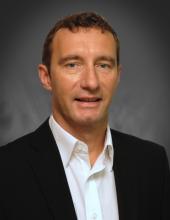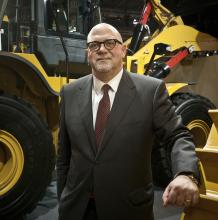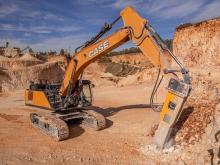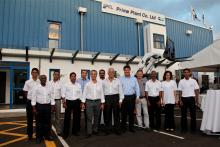The new structure is designed to strengthen product orientation and customer focus, reduce complexity, and empower employees with clear accountability. Doosan is also aligning the organisation structure to better focus on the varying needs of both compact and heavy equipment markets.
The key changes and organisational structure outlined below will take effect immediately.
A key change in the aligned structure is the creation of four business units: Heavy, Compact, Parts and Global Business.
Each of these business units will incorporate design, manufacturing, marketing, sales, human resources and product support for the entire value chain. This new structure will increase accountability and drive global growth as well as profitability.
The Heavy business unit will be led by Martin Knoetgen, president DICE EMEA; newly-elected vice president Jose Cuadrado will head the Compact business; the Parts business unit, to be led by newly-elected vice president Fabien Portier, will bring increased focus to aftersales, and vice president Norbert Donaberger will lead the Global Business unit which includes Montabert, Geith, the
The alignment also introduces four shared functions: Sales and Customer Solutions; Supply Chain and TQM, Finance and IT, and Human Resources and Internal Communication.
Vice president Giuliano Parodi will head Sales and Customer Solutions. It will focus on delivering profitability targets per business unit and short- and long-term market share, while enhancing the positioning of brands and distribution capabilities.
• Doosan has integrated its Sourcing, Supply Chain and TQM and Operations Excellence as one function for improved control of the value chain and reduced management span. It will be led by vice president Alvaro Pacini.
• Vice president Jean-Philippe Dara will continue to lead the Human Resources department and expand his role to lead Internal Communication.
• Chief financial officer Astrid Rahn will expand her role to also lead the IT department.
Doosan is transferring the compact business management of CIS territories to EMEA in Belgium and the Heavy business for Middle East and Africa territories to AP/E in Korea. This alignment to the market will enable them to bring businesses closer together in those two regions and helps to streamline the company’s decision making processes.
“In order to better position ourselves for long-term success in a challenging global economy and to meet and exceed the needs of our dealers and customers in all of our regions we are aligning DICE, based on the principle that ‘the right product at the right place for the right price with the shortest business distance between the manufacturer and the customer is key’. We are focusing on our business relations, supply chain and speed to the market,” says Martin Knoetgen, president DICE EMEA.









